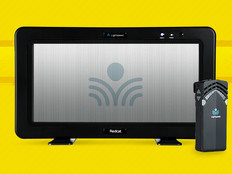The Road to Better Educational Mobile App Integration
Mobile user groups are springing up in many educational settings. Faculty, staff and students meet, discuss and demonstrate some of the latest mobile applications for various smartphone and tablet devices. But how are these applications used? Do educators understand how to effectively integrate mobile devices into the curriculum, and do they fully understand how the devices differ from other forms of instructional technology and e-learning?
Many instructors adopt and deploy mobile apps in their learning environments before taking into account how the selected software can be used to satisfy the goals and objectives embedded in their courses. Although mobile devices often are thought of as content delivery vehicles, it's important to consider how instruction is designed and presented to students using mobile devices, along with software that appeals to various cognitive and learning strategies.
While e-learning addresses a specific intent to learn something, mobile learning is much more informal, unstructured, opportunistic and situational. Consequently, it's no surprise that instructors look for ways to integrate mobile learning into their teaching to make course content more portable. They also want to embed instruction into more situational and problem-based learning activities and tasks, such as field experiments.
However, to realize its full potential, effective methods for identifying, selecting, delivering and assessing high-quality mobile-learning activities are required. Implementing a mobile-learning app before the student learning objectives and competencies are identified is counter to almost every conventional theory of instructional design. Improperly applied instructional materials can lead to a situation in which the student spends more time trying to master the device or application than satisfying the curricular objective.
71% The percentage of students with access to tablets who say they use their device at least once a week; of faculty with access to tablets, 75% use them at least once a week
SOURCE: Learn Now, Lecture Later Report (CDW•G, 2012)
However, many instructional designers argue that successful mobile learning can be introduced through discovery learning, situational learning or problem-based learning, as opposed to structured learning. Discovery learning supports the notion that students are more likely to remember concepts if they discover and build them on their own — as opposed to learning them directly through traditional structured teaching.
Based on that philosophy, here are some best practices that faculty and teachers should consider when adapting mobile applications to their curriculum.
- Select apps that directly support the course content. Don't select apps for mobile devices because they look intriguing. Most apps are opened only once or twice. Give some thought to whether students will actually use the app for the intended instructional goal. When managed correctly, very little class time should be consumed teaching students how to properly use an app. Most often, students learn to use the device and the application very quickly. Using techniques such as a flipped classroom, students can learn how to use the device outside of class, allowing the instructor more time during class to engage in the curriculum. Remember, mastery of the device and the application is not the goal.
- Use sound instructional-design principles when building courses around mobile apps. When designing curriculum for mobile instruction, consider how students will engage with the devices. After all, these are not notebook computers. Mobile devices are most effective when the instructional units are written to take advantage of discovery, situational or problem-based learning opportunities. These three terms are often used interchangeably, but the intent is the same: They challenge students to construct their own knowledge, either working independently or in teams. In fact, mobile devices lend themselves well to self-directed, team-based learning experiences. These curricular learning units often are based on real-world events and problems students are likely to encounter, such as science experiments, historical tours and math problems.
- Identify key objectives you want students to learn before selecting an app. Be certain you've identified what you want students to learn. For example, there are a number of excellent mathematics apps on the market that provide tutorials in algebra, calculus and trigonometry. Rather than using the app as a random drill and practice, clearly define what you want the student to accomplish through use of the product before introducing it into the curriculum.
- Make sure an app is intended for the correct audience and age level. Most educational apps normally include a target age that is most appropriate.
- Determine how you will assess learner proficiency prior to deployment. As with any type of learning, data collection is very important for evaluating the effectiveness of the instruction. In traditional education, we would determine mastery using a series of examinations or other demonstrations of proficiency. However, most apps do not include built-in assessment mechanisms, so mastery of the topic must be collected using another process. Demonstration of mastery is typically exhibited when the student or team of students is asked to present the learning unit to classmates, or by using a digital portfolio that represents a collection of their work.
- Use screencasts that show how the app functions prior to deployment. At Emporia State University, we use multiple products that allow us to develop short screencasts or tutorials of the mobile application. By blending two different capture applications, we can illustrate the functionality of the application in real time, while including closed captioning for those students with disabilities.
- Integrate the app with existing classroom technologies to aid adoption of the devices into routine teaching and learning. The beauty in using many of these mobile devices is their ability to seamlessly integrate with many traditional classroom technologies. Using a web-based television, the instructional-design team can easily mirror mobile applications onto projection screens, flat screens and other types of display systems in classrooms. Instructors also can use interactive whiteboards in tandem with the mobile device, allowing for overlay capabilities. Soon enough, mobile devices will be mainstream devices as common in the classroom as any other technology.






